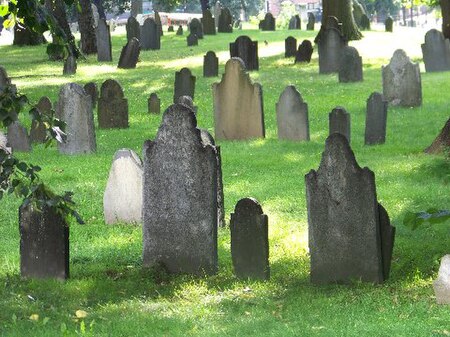Central Burying Ground, Boston

The Central Burying Ground is a cemetery in Boston, Massachusetts. It was established on Boston Common in 1756. It is located on Boylston Street between Tremont Street and Charles Street. Famous burials there include the artist Gilbert Stuart, painter of the famed portraits of George Washington and Martha Washington, and the composer William Billings, who wrote the famous colonial hymn "Chester." Also buried there are Samuel Sprague and his son, Charles Sprague, one of America's earliest poets. Samuel Sprague was a participant in the Boston Tea Party and fought in the American Revolutionary War. When the Tremont Street subway was under construction in the 1890s, burials were discovered in the area abutting the cemetery. These were reinterred in a mass grave within the bounds of the burying ground.
Excerpt from the Wikipedia article Central Burying Ground, Boston (License: CC BY-SA 3.0, Authors, Images).Central Burying Ground, Boston
Boylston Street, Boston Beacon Hill
Geographical coordinates (GPS) Address Phone number Website External links Nearby Places Show on map
Geographical coordinates (GPS)
| Latitude | Longitude |
|---|---|
| N 42.35276 ° | E -71.06597 ° |
Address
Central Burying Ground
Boylston Street 125
02108 Boston, Beacon Hill
Massachusetts, United States
Open on Google Maps






